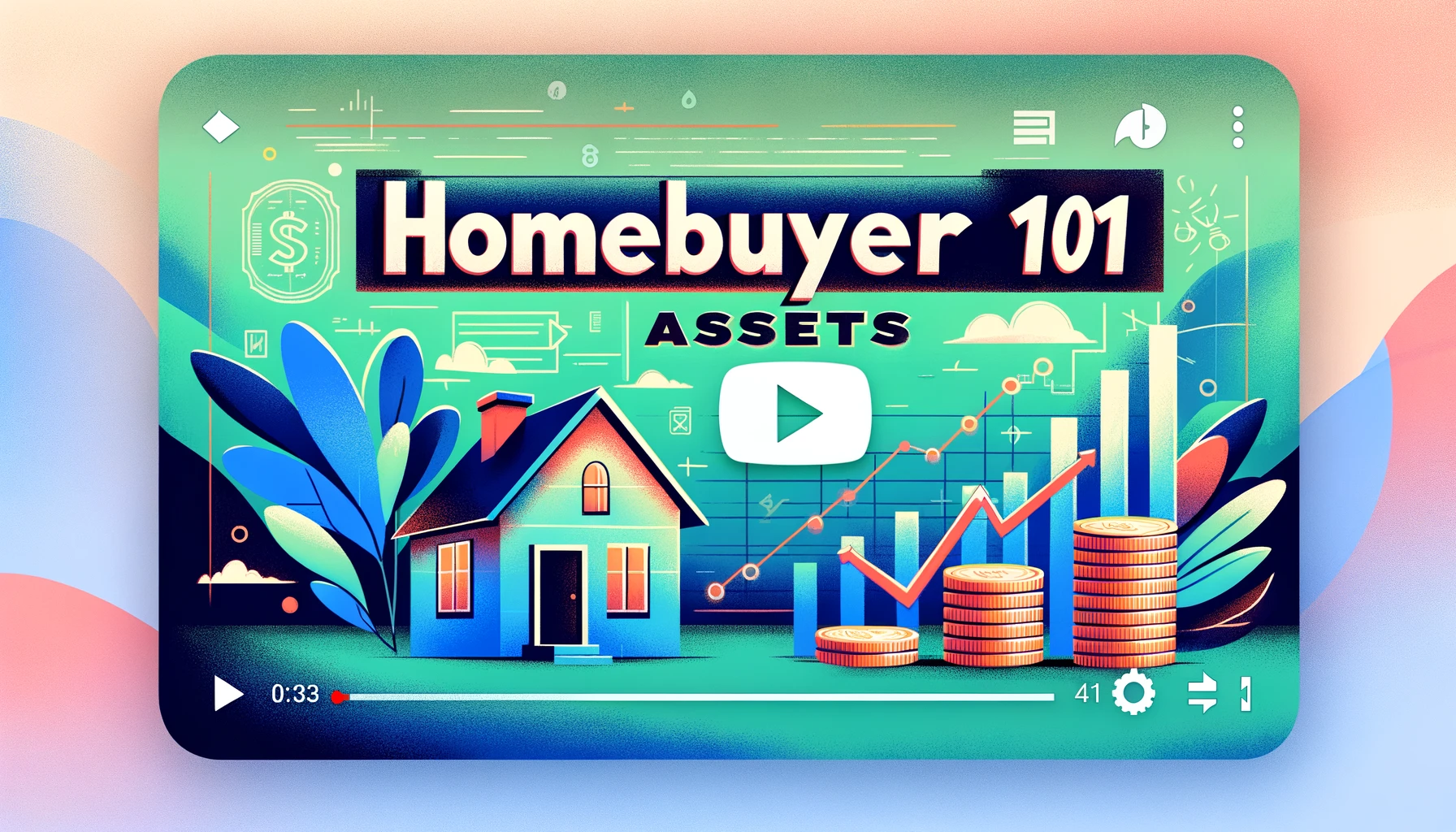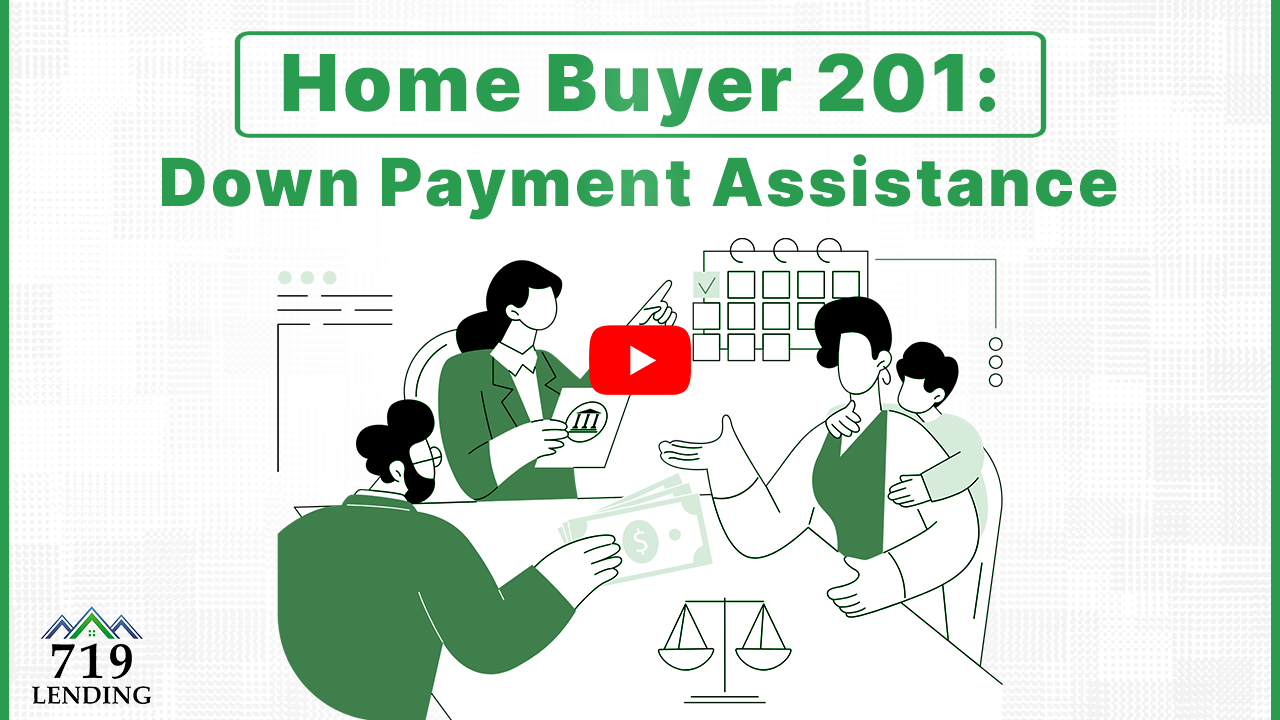6 minute lesson Lesson Summary Importance of timely document submission for your loan Types of…
Homebuyer 201: What is a LLPA
Lesson Summary
-
LLPA stands for Loan Level Price Adjustments.
-
LLPA is a risk factor that determines the interest rate for a homebuyer.
-
Lower risk factors result in better interest rates.
-
Factors that affect LLPA include down payment amount, loan type, credit score, property type, transaction type etc……
-
Fannie Mae and Freddie Mac set guidelines for LLPA, and lenders may add their own adjustments.
-
First-time homebuyers and certain income qualifications can limit LLPA.
-
Asking your loan officer about qualifying programs can help reduce LLPA.
Interest rates can vary even for similarly situated home buyers, leaving many puzzled over the disparities.
Imagine two neighbors, one with a sizeable down payment, the other with a smaller sum — their risk profiles to the lender differ substantially.
Diving into the realm of home financing, we encounter Loan-Level Price Adjustments (LLPAs), a matrix of varying charges impacting your mortgage rate.
Understanding LLPA
LLPAs are dynamic, tethered to an individual’s unique financial landscape. They magnify or mitigate the lender’s exposure through interest adjustments.
In essence, LLPAs serve as a financial barometer, assessing various metrics such as down payment size and credit score, which then have a direct impact on the assigned interest rate for borrowers.
The term “risk-based” encapsulates the philosophy behind LLPAs — they precisely tailor the cost of a loan to an applicant’s risk profile.
Definition of Loan-Level Price Adjustments
Loan-Level Price Adjustments (LLPA) directly impact your interest rate based on your loan’s perceived risk.
LLPAs adjust rates like a financial thermometer, reacting to the fever of credit risk and down payment size.
They are essentially risk-based premiums set by Fannie Mae and Freddie Mac to offset potential losses due to borrower default.
In practice, LLPAs can influence your rate up or down; a high credit score and sizable down payment often lead to a more favorable rate.
How LLPAs Affect Interest Rates
Loan-Level Price Adjustments (LLPAs) are critical in determining your mortgage rate by quantifying risk.
- High credit scores often reduce the impact of LLPAs, leading to lower interest rates.
- Larger down payments indicate financial commitment, minimizing LLPA impacts and possibly bettering rates.
- Loan type and purpose can influence LLPAs — refinances and investment properties often carry higher adjustments.
- Borrower occupancy status, like primary versus secondary homes, plays a role in assessing risk and LLPA.
- Debt-to-income ratio (DTI) acts as a measure of financial health, affecting the LLPA applied.
- Loan-to-value ratio (LTV) shows equity stake and affects rates — lower LTV presents less risk, softening LLPAs.
Consider LLPAs as fine-tuning dials, incrementally adjusting rates to align with your financial profile.
A strategic lender can navigate LLPAs to optimize your loan’s cost, marrying your qualifications with the best possible rates.
Factors Influencing LLPA
Your home’s property type, such as a condo versus single-family home, influences the LLPA due to varying risk perceptions.
The occupancy type, like whether the property will be a vacation home or rental, can lead to increased adjustments tied to perceived usage risks.
Even your coined term, “rate-sensitive,” may alter how LLPAs impact the cost of your borrowing experience.
Down Payment Considerations
The size of your down payment significantly influences your loan’s risk assessment, which ultimately affects your LLPA. Typically, a larger equity stake means a lower credit risk, and as a result, a potentially more favorable interest rate.
A minimal down payment may seem attractive, but it can increase your LLPA. This raises your borrowing cost, offsetting upfront savings.
Conversely, putting down a significant sum can reduce the risk for the lender. This often translates to lesser loan-level price adjustments and a lower overall interest rate.
Your down payment can also influence the type of mortgage you qualify for. Certain loan programs might have specific LLPA guidelines based on down payment percentages.
When evaluating mortgage options, consider how varying down payments affect LLPA. Sometimes, a slightly higher down payment can shift you into a more advantageous lending bracket, reducing your overall costs.
Finally, your down payment is not just about the percentage—it’s about strategy. Assess your finances and goals to determine the optimal amount that balances manageable payments with minimized LLPA impacts.
Importance of Credit Scores
Credit scores are pivotal in determining your mortgage costs. A higher score can lead to reduced LLPAs and therefore, a more attractive interest rate.
In essence, a high credit score suggests financial responsibility and a lower risk to lenders. It’s a measure of your financial past, indicating to lenders how you’ve managed credit before. If your history is exemplary, with timely payments and sensible credit use, lenders view you as lower-risk. This favorable impression can translate into lesser LLPAs, enhancing the terms of your loan.
Conversely, a low credit score signals to lenders a history of financial missteps. Whether due to late payments, excessive credit use, or defaulted loans, such indicators increase your perceived risk. Thus, more significant LLPAs are often applied, ramping up your interest rates and your total loan cost.
However, it’s not all set in stone. Though your current score plays a substantial role in initial rate settings, some strategies and behaviors can influence your score over time. Consistent, responsible credit practices post-mortem such as timely bill payments, reducing outstanding debts, and avoiding new credit inquiries can improve your credit, potentially leading to refinancing opportunities with better terms.
First-Time Homebuyer Advantages
As a pioneering purchaser stepping into the real estate arena, you’re in a unique position to potentially bypass or mitigate certain LLPAs. First-time homebuyer programs often provide more lenient terms, considering that your foray into homeownership represents both a substantial personal investment and a beneficial ripple in the community landscape.
Many of these programs recognize the challenges new entrants face and respond with incentives that can soften the financial burden. Tailored assistance might include reduced down payment requirements or the waving of some LLPAs, putting homeownership within reach without overextending your financial means.
Special LLPA Limitations
In the realm of home financing, LLPAs can variably impact rates, tethered closely to borrower risk profiles and certain mitigating circumstances. Notably, some special conditions can curtail the extent of LLPAs applied, easing the cost of borrowing.
First-time homebuyer programs are prime examples of such conditions. These initiatives acknowledge the daunting barrier of initial home purchases and strive to make entering the housing market less financially inhibitive.
Furthermore, income-driven programs geared toward borrowers earning less than the area median income may offer further LLPA reprieves. These targeted efforts help maintain economic diversity within thriving housing markets.
Certain loan types can also play a pivotal role in LLPA assessments. Government-backed loans like FHA, VA, or USDA may have different criteria or exemption statuses, reflecting the policies of their respective programs.
Another vector of LLPA limitation is through borrower contributions via larger down payments. A significant upfront investment can reduce perceived risk, allowing lenders to offer more favorable rates despite the standard LPAA schedule.
Ultimately, the interplay between these programs and LLPAs can significantly affect a homebuyer’s bottom line. Proactive engagement with loan officers and a thorough exploration of available programs become crucial in navigating this complex financial terrain.
Program Qualifications and Benefits
Navigating the terrain of loan-level price adjustments (LLPA) begins with understanding eligibility criteria that can influence your rate.
- Credit Score: Higher scores generally equate to lower LLPAs, thus fostering better interest rates.
- Down Payment: A larger down payment can significantly reduce LLPAs due to decreased lending risk.
- Property Type: Occupancy type such as primary, secondary, or investment affects LLPAs.
- Loan-to-Value Ratio: The more equity you have in the property, the less risk you pose, affecting your LLPA.
- Debt-to-Income Ratio: A lower ratio can positively impact LLPAs by demonstrating financial stability.
- First-Time Homebuyer Status: Being a first-time buyer sometimes qualifies for LLPA discounts.
- Income Level: Earning below the area median income may qualify for reduced LLPAs through specific programs.
Qualifying for LLPA reductions can translate to substantial savings over the life of your loan.
Benefiting from lower LLPAs requires strategic planning, such as boosting your credit score or saving for a sizable down payment.
Maximizing Your Mortgage Terms
Understanding the intricacies of Loan-Level Price Adjustments (LLPAs) is crucial for navigating the potential financial labyrinth of your mortgage. To secure optimal terms, focus on fortifying your creditworthiness, stockpiling a substantial down payment, and discerning the most favorable mortgage products for your situation. Proactive measures such as these can mark the difference between an onerous interest rate and one that aligns seamlessly with your financial blueprint.
Your ability to negotiate more advantageous mortgage conditions heavily hinges on familiarity with LLPAs. Engage in conversations with your loan officer, who can elucidate the multifaceted elements influencing your rate. With adept guidance and a strategic approach to satisfying LLPA criteria, you can establish a mortgage environment that supports your long-term fiscal health and homeownership goals.
Negotiating with Lenders
Understanding LLPAs paves the way for effective negotiation on your mortgage terms. It’s a financial nuance that requires mastery.
Transparent dialogue with your lender about LLPA adjustments can lead to a rate that’s tailored to your unique financial scenario. Clarifying your risk profile is essential.
Question the specifics: How do different down payments affect LLPAs, and what do they mean for your loan’s cost over time? Your lender’s insights are invaluable.
Your strategic positioning could involve demonstrating lower risk or qualifying for programs that alleviate LLPAs. Every percentage point and credit score tier matters.
Conclude with confidence, ensuring you’ve thoroughly vetted the LLPA influence on your mortgage agreement. Victory lies in the details—grasp them and negotiate wisely.
Impact of Different Down Payments
Down payments are pivotal in determining your mortgage rate nuances. They signal commitment and financial capability to lenders, impacting LPAs directly.
A sizable down payment often translates to reduced risk in the eyes of lenders, compelling them to offer favorable loan terms with lower LLPAs, ultimately benefiting you.
Conversely, a minimal down payment can portray higher risk, potentially escalating LLPAs. However, it can also unlock specialized loan programs tailored for such scenarios.
Strategically adjusting your down payment isn’t just about percentages; it’s a nuanced decision that intertwines with your credit profile, and thus, your LLPA implications.
Deliberate down payment planning is key to navigating LLPAs. It’s a critical factor intertwined with your mortgage affordability and long-term financial well-being.



